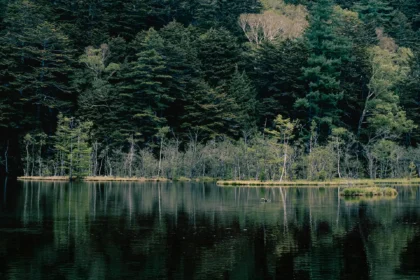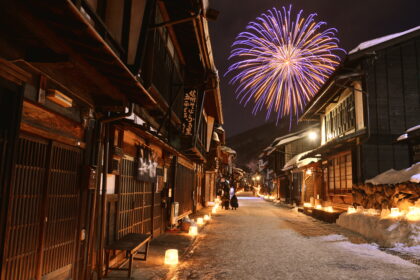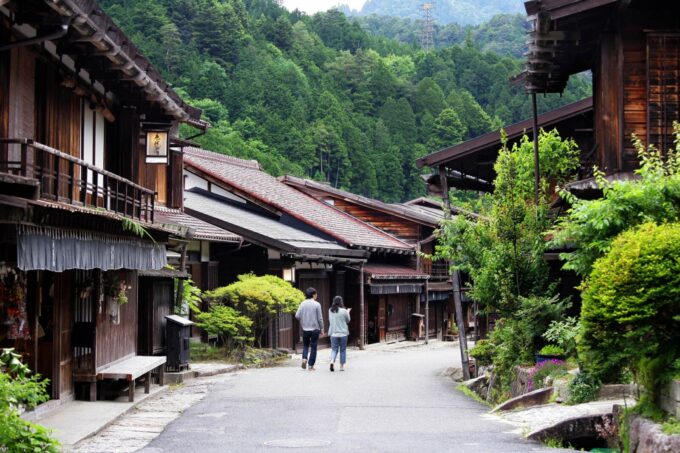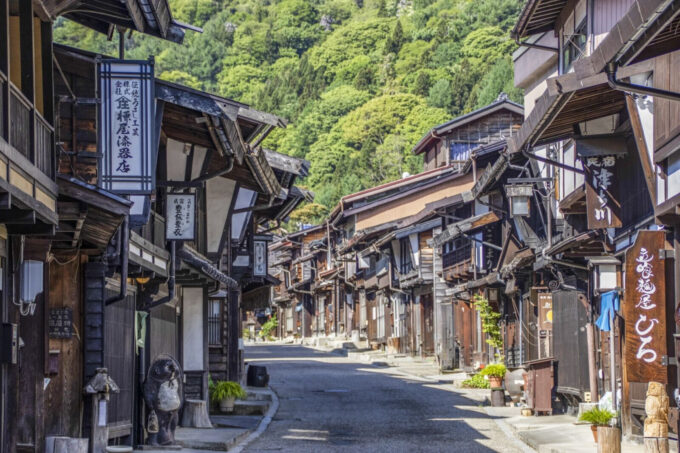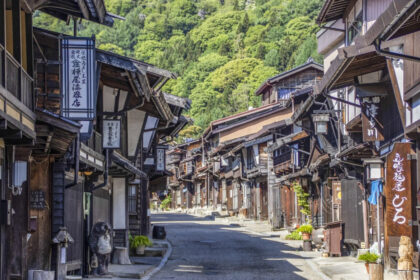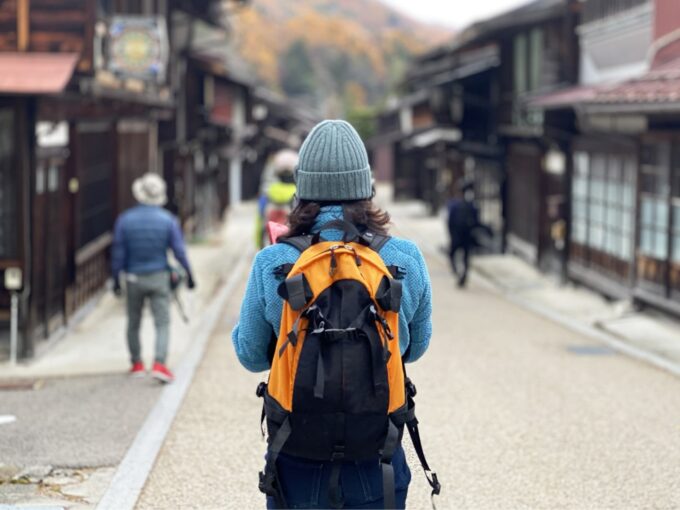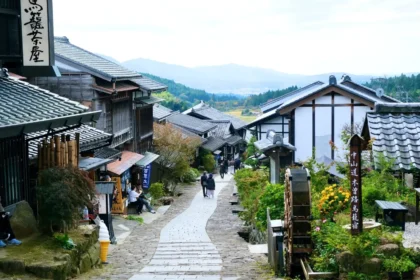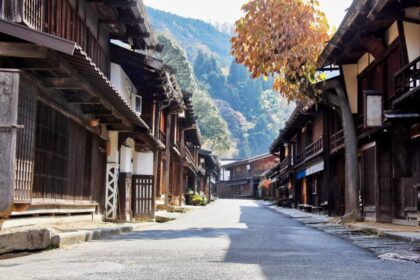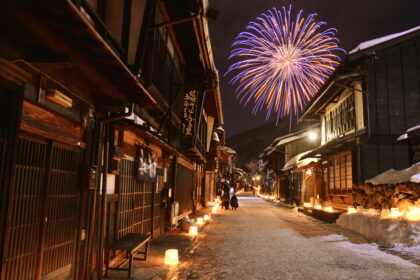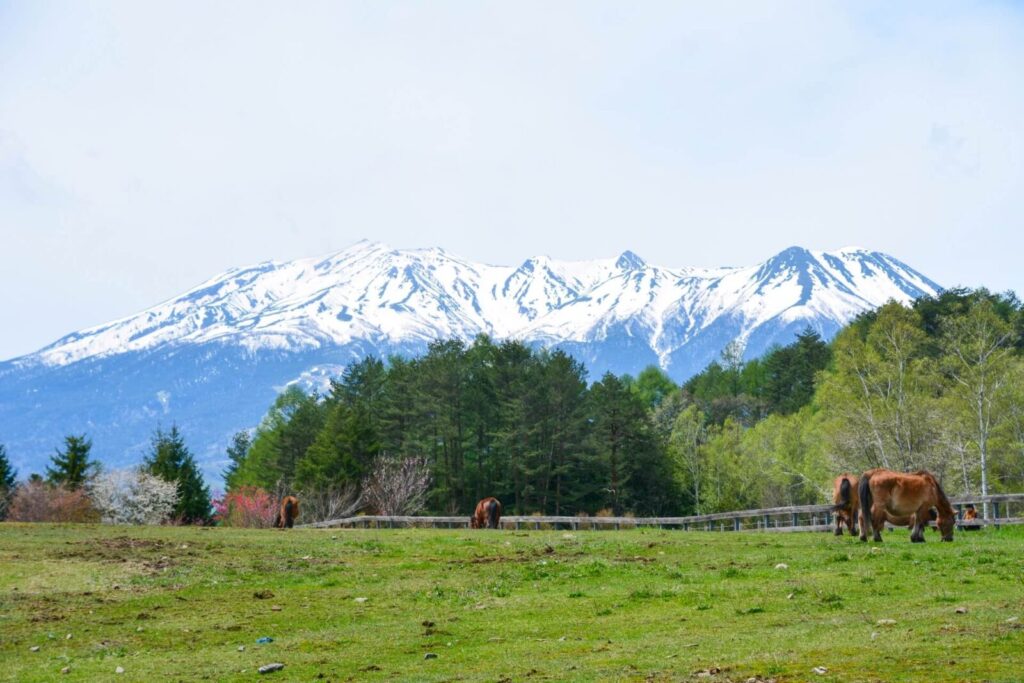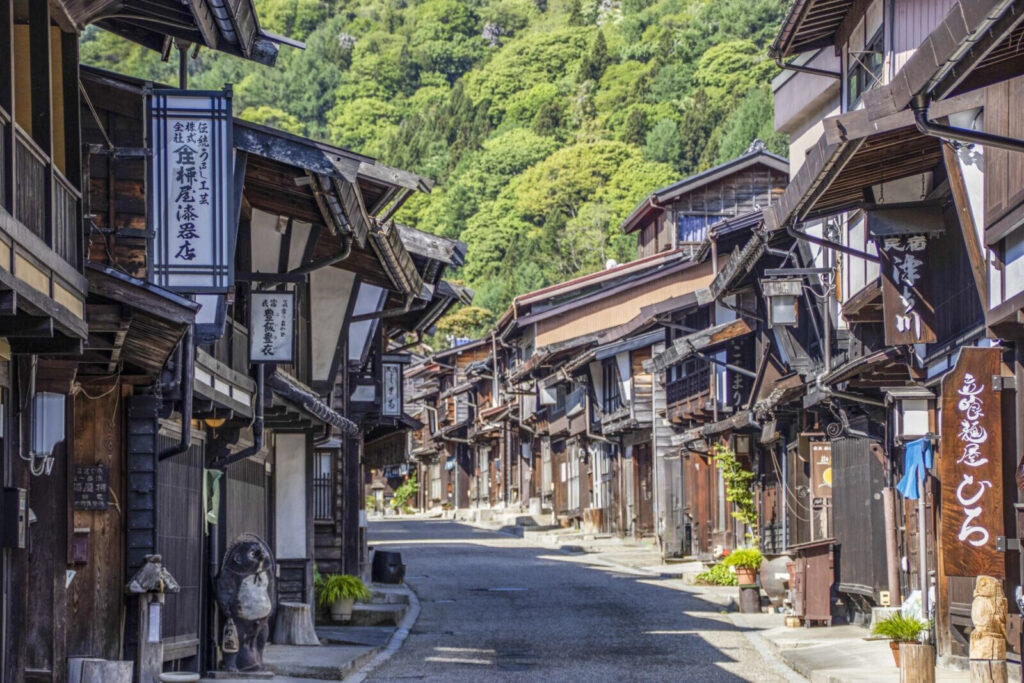
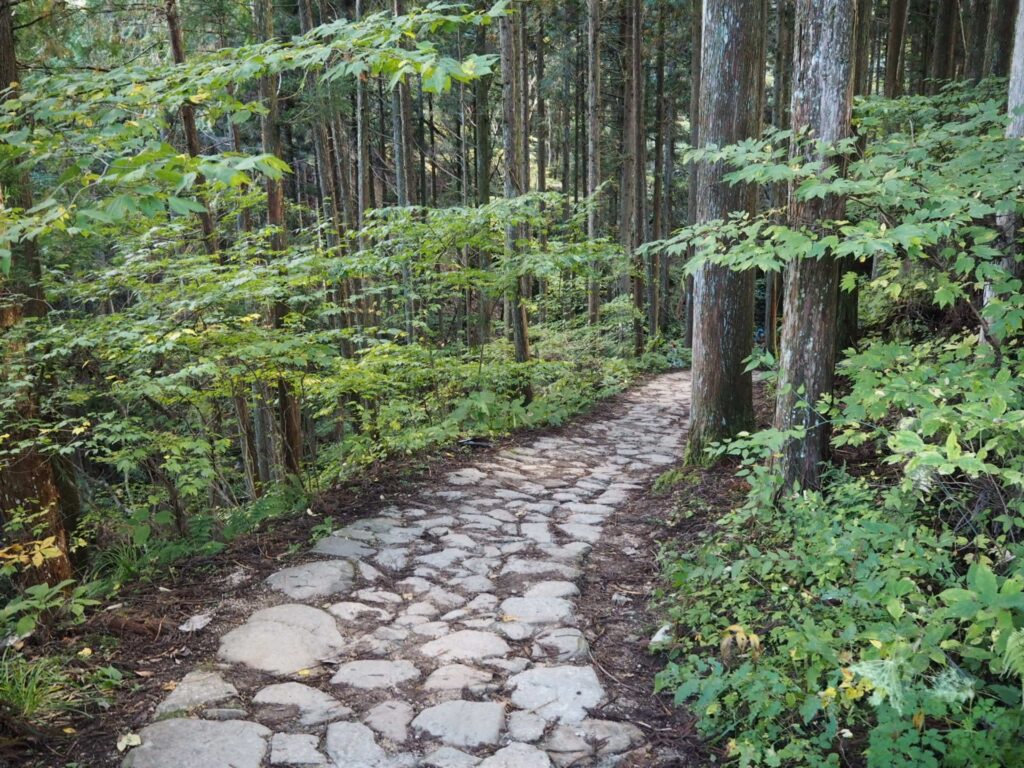
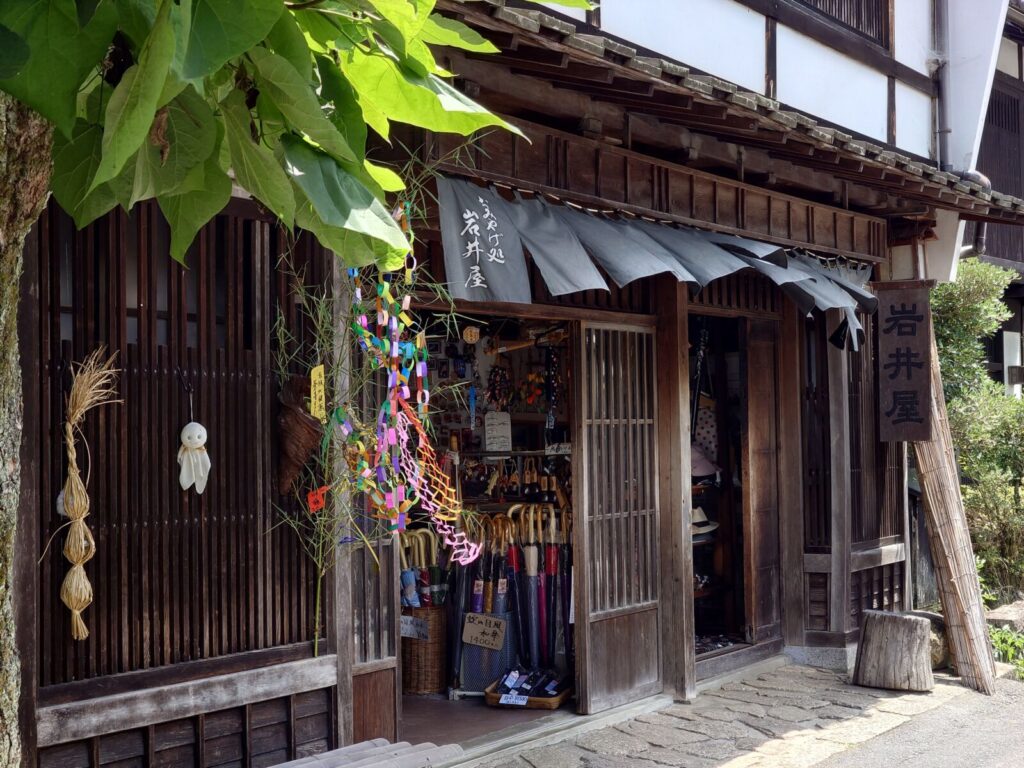
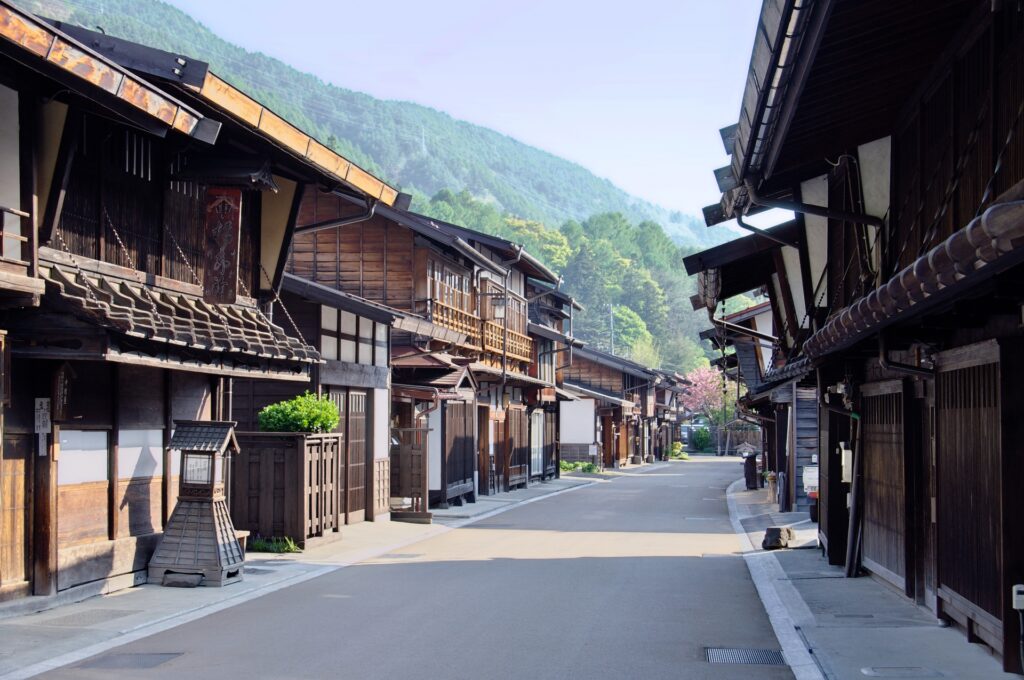
As a major trade route, postal towns developed along the road to monitor, tax, and service the human traffic and their cargo. Known as ‘juku’, a total of 69 postal towns controlled passage on the road, with many achieving great wealth due to patronage by ‘daimyo’ (feudal lords) and their entourages as they moved to and from the capital. Towns including Narai, Magome and Tsumago remain in excellent states of preservation, with measures in place to retain the historic character and importance of each juku. Each town is a destination in its own right, with guesthouses, restaurants and traditional craft stores enticing visitors to take their time, explore and stay overnight on the Nakasendo.
The trail can be walked any time of year. We recommend spring and autumn to coincide with the cherry blossoms and stunning autumn leaves. These are the most popular seasons for walking the trail so make sure to book your accommodation well in advance. Heat and humidity in summer make the walk more taxing so make sure you are prepared for the conditions and take your time. The trail is open during winter but it is not maintained. Specialist walking gear is required as snowfall can be heavy.
Where Is the Nakasendo Trail?
The Kiso Valley, through which the Nakasendo runs, is a beautiful area located between Shiojiri and Nakatsugawa in Nagano Prefecture. The area lies to the west of Tokyo – around 250KM / 3.5 to 4 hours drive. Running north to south, the valley follows the Kiso River for around 70km and is known for its pristine waterways, forests, waterfalls and hiking trails including the historic Nakasendo.
A key route linking Tokyo – then called ‘Edo’ – to Kyoto during the Edo Period (1603-1868), the Nakasendo spanned a distance of more than 500KM with the area of the route that passed through the Kiso Valley, known as the ‘Kiso-ji’, regarded as particularly beautiful. Parts of the route can still be walked today with the ‘shukubamachi’ towns of Magome and Tsumago being the most popular destinations, located in the southern part of Kiso Valley nearby Nakatsugawa Station.
Most visitors heading to the Kiso Valley and Nakasendo do so using the Limited Express Shinano service. Running between Nagano and Nagoya, all limited express services on the line stop at Kiso-Fukushima Station and Nakatsugawa Station. As explained below, we recommend staying in the Kiso-Fukushima Station area.
The History of the Samurai Road

While getting around Japan nowadays is made easy by the country's numerous and well maintained roads, train lines, airports, and ferries, that wasn't always the case. Stretching almost 3,000 km from North to South and being largely mountainous and densely forested, infrastructure in Japan is often expensive and challenging to build, and in previous centuries cross country trips would take many months on foot through potentially dangerous roads.
Starting in the 600's AD, many efforts were made by the central government to improve the road system and increase safety for travelers, but this monumental task could not be completed overnight.
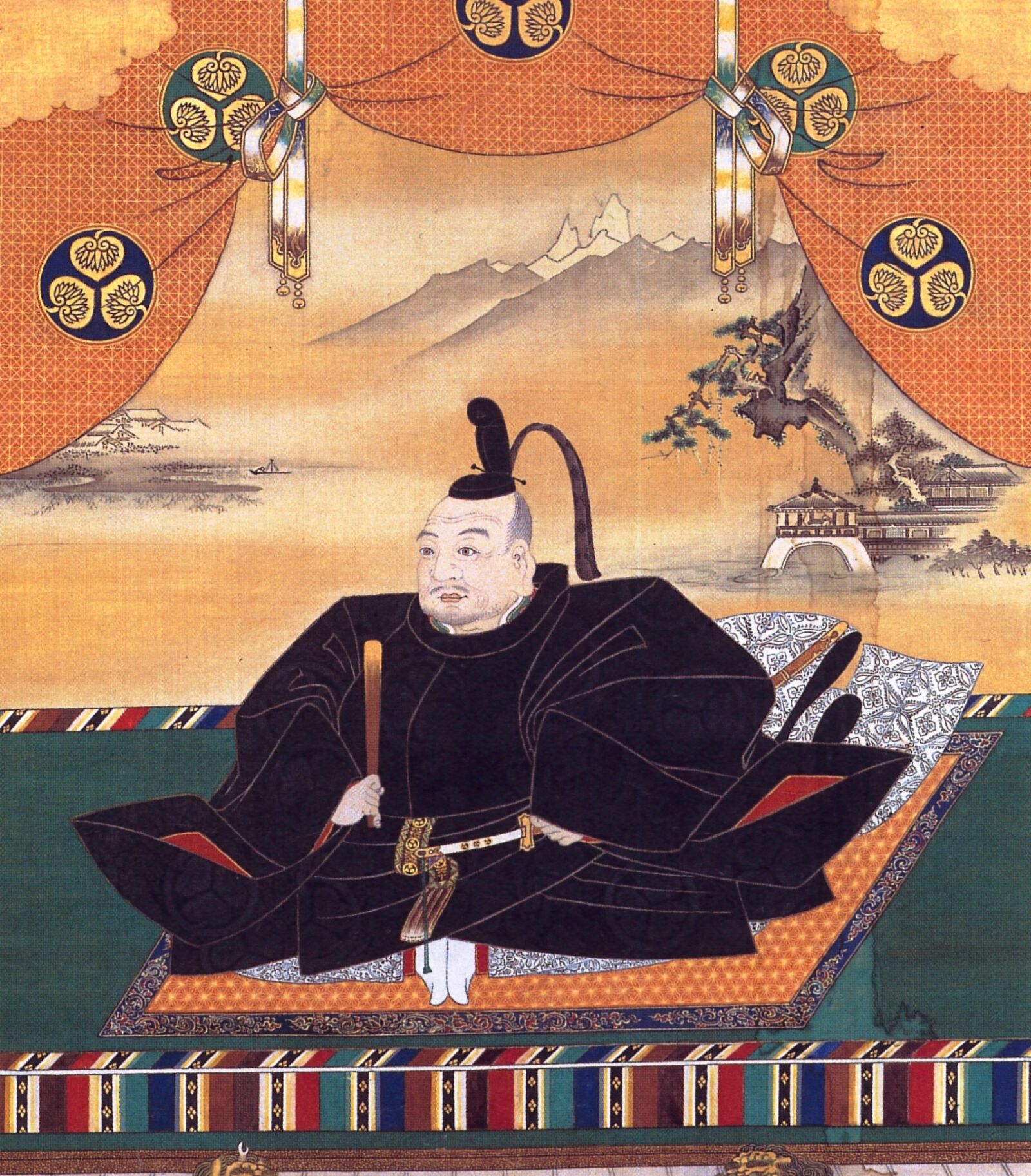
A manor figure in the development of managed and safe roads was Tokugawa Ieyasu, pictured above. As the first Shogun of the new Tokugawa Lineage, which began ruling Japan in the year 1600 and continued to do so until the Meiji Restoration in 1868, promoting trade and internal development in the new era of peace under his rule was of the utmost importance.
In 1601, he ordered the creation of five centrally managed roads, all starting from Edo (now known as Tokyo), the the new capital of Japan. Of those roads, the two which connected Edo and Kyoto are the most famous today - the Tokaido and the Nakasendo. The Tokaido has lent its name to the Tokaido Shinkansen, the bullet train route connecting Tokyo and Kyoto, and therefore still lives on in the minds of travelers today. The Nakasendo, however, largely fell out of use after the 1800's and was thus able to preserve more of its charm and history, away from destructive industrial development. The name, meaning 'middle mountain road', is a ample description of the route it takes through the mountainous central region of Japan.
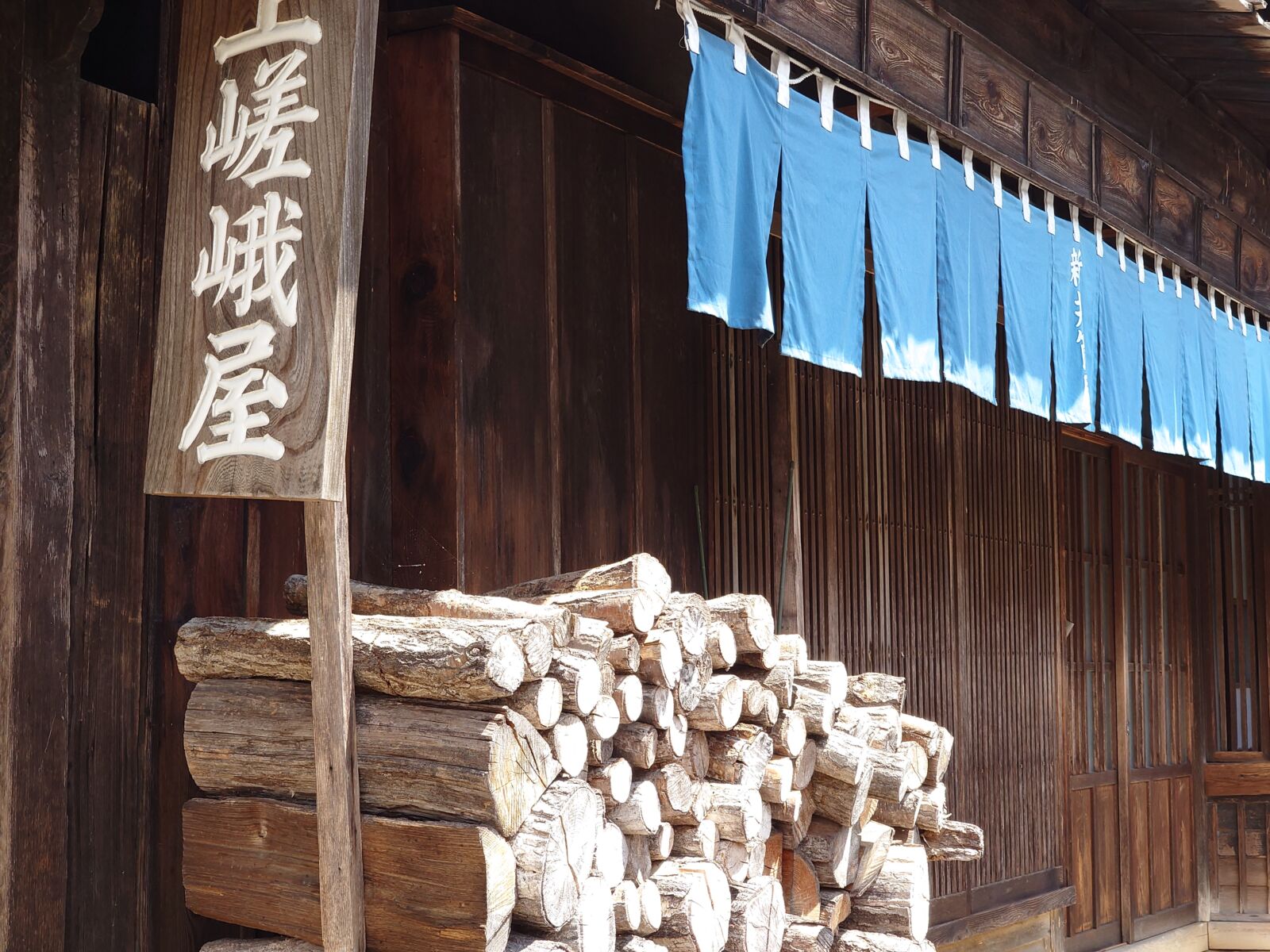
As part of the management of these roads, numerous laws were enacted. The cleaning and caretaking of the road was to be handled by the villages, towns, and cities along its path. Signposts were erected at regular intervals to inform travelers of the correct route and the distance to their destination. Tea houses sprung up at scenic spots along the way, tempting travelers to stop and enjoy a cup of tea with a view. And perhaps most importantly, post towns were established at regular intervals (usually around 7-8 km) along the way, each equipped with some number of official inns and post offices along with horses for use in carrying goods and letters The system allowed for rapid delivery of mail - if necessary, letters could even be taken the 500km between Edo and Kyoto by the evening of the next day. This was done by running the horses as fast as possible between towns and switching to a new horse at the next town.
Beyond official business, private business of all sorts sprung up in these post towns, and soon restaurants, tea houses, private inns, clothing shops, souvenir shops, and even carnival booths were to be found throughout the trail. With this came an increase in travel for leisure and business, bringing a new age of connectivity and prosperity and ushering in the era of taking vacations for your own pleasure. Thronged with Samurai, mail carriers, vacationers, and more, the streets must have been a sight to behold in their heyday. Today, many of these towns have disappeared or been subsumed into sprawling cities, but in the Kiso Valley a number are left just as they were, with souvenir shops, inns, and eateries still welcoming travelers.
Best Towns on the Nakasendo Trail
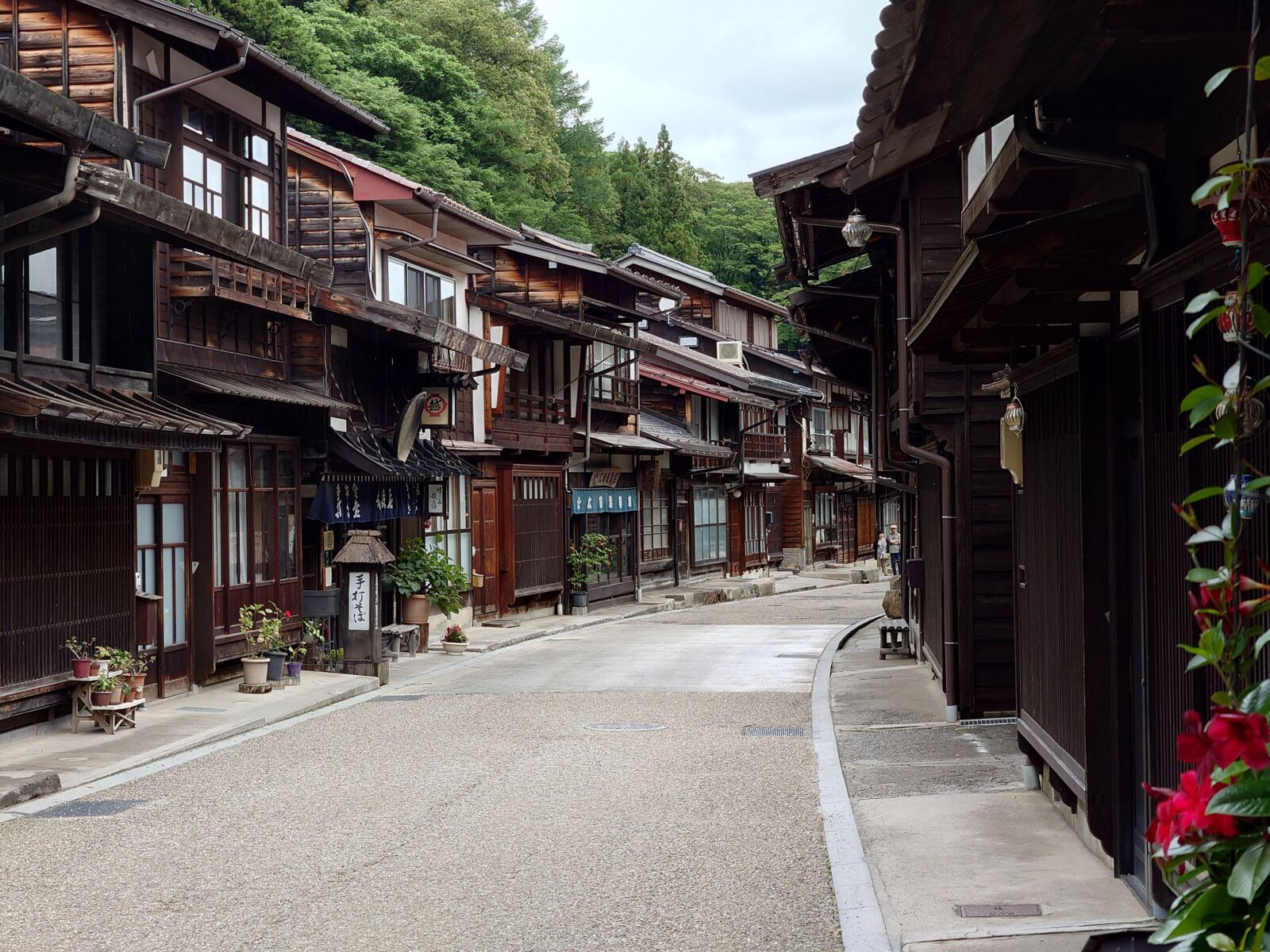
While the Nakasendo is composed of 69 post towns altogether, currently only a fraction of that number maintain the look and feel of their original history. Of those that do, most are located in the Kiso Valley in southern Nagano Prefecture. See below for our pick of the top 3:
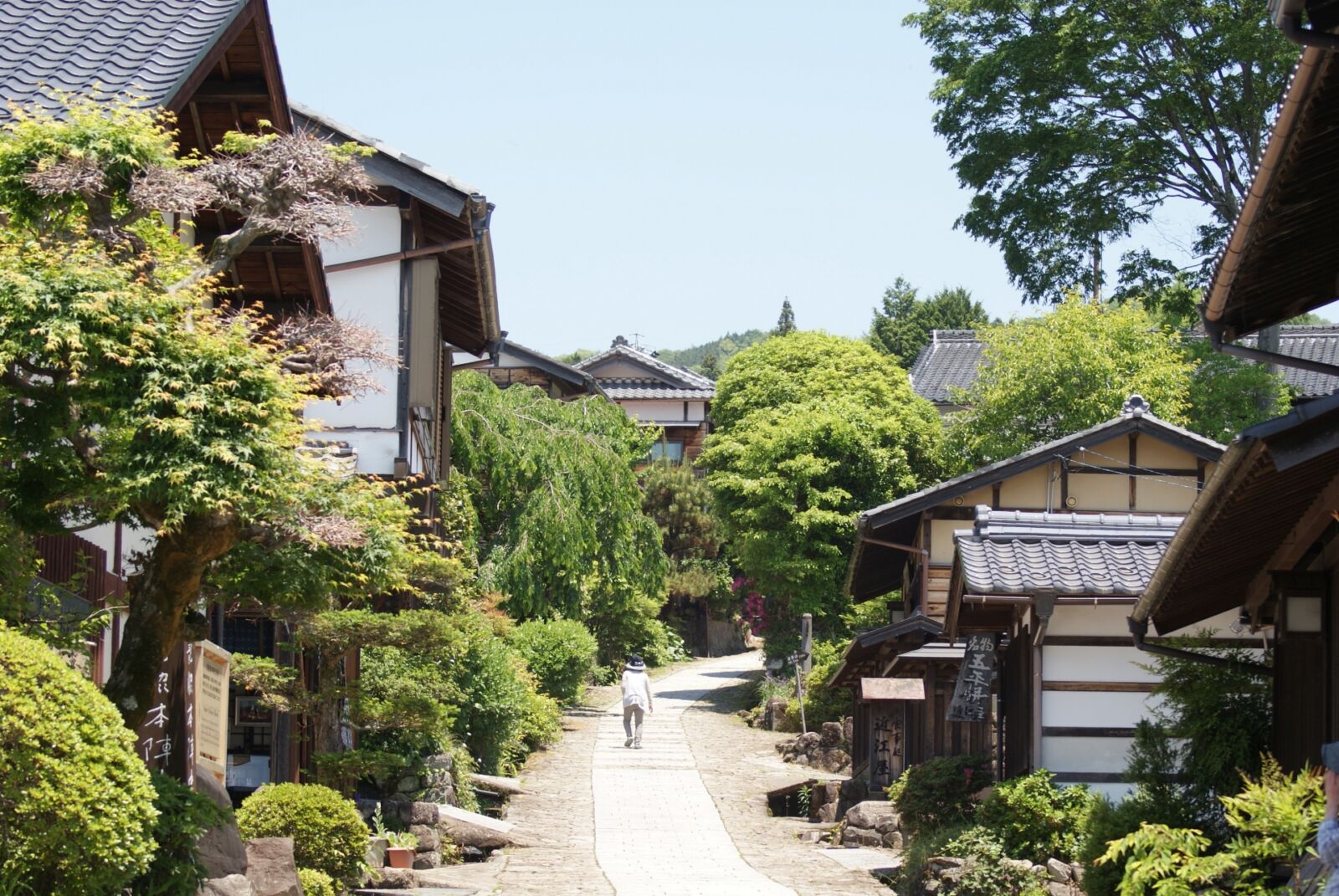
Magome: One of the best-preserved postal towns on the Nakasendo, Magome is known for its steep incline and beautiful views of the surrounding landscape. The historic town center has been extensively restored including a broad stone walkway with a daytime ban on the entry of vehicles. Guesthouses, restaurants, cafes and stores line the road, with plenty to explore and enjoy during the day. Visitors staying overnight at one of Magome’s ‘ryokan’ (traditional guesthouses), should opt to include dinner and breakfast as local restaurants do not stay open at night.
Located only 15 minutes drive from Nakatsugawa Station, Magome is a popular starting point for walking the Nakasendo, with the approximate 7.5km walk to Tsumago being the most popular section of the trail. Taking between 2.5 to 3 hour, the walk takes you through an undulating landscape of rice paddies, farm fields, streams, forests and even some waterfalls and onto the next famous post town.
New Tour
[START FROM NAGOYA] Rural Japan in Magome & the Kiso Valley Private Tour
- Spots:
- NagoyaKiso Valley
- Pick-up:
- Nagoya
- Drop-off:
- Nagoya
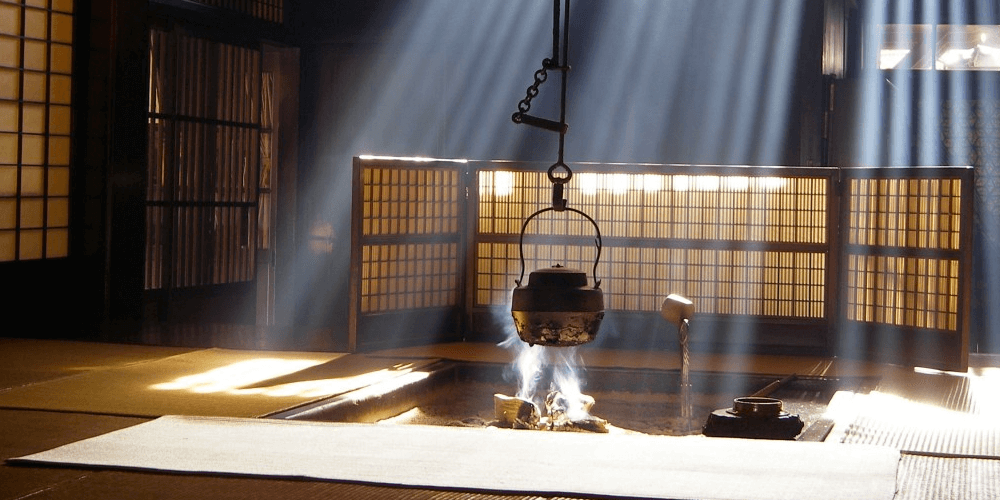
Tsumago: Tsumago is one the best preserved and most popular for post towns on the Nakasendo. Home to some great restaurants and traditional guesthouses, Tsumago is extremely popular and can be busy during the peak seasons of spring and autumn. While in town, the beautifully reconstructed honjin and original wakihonjin should be visited, with English tours available at the later. Strolling the streets of Tsumago, past guesthouses, family homes, restaurants, stores and temples transports you back to Edo Period and the Japan of your imagination. It is an experience best enjoyed on foot, enhanced by arrival in each town following passage through forest and farmlands much-like people did hundreds of years before.
Tsumago is a 25 minute drive from Nakatsugawa Station and 45 minute drive from Kiso-Fukushima Station. While the walk to and from Magome can be done in either direction, we recommend walking from Magome to Tsumago.
Popular
1-Day Tour from Nagoya: Hiking the Historic Nakasendo Trail
- Spots:
- NagoyaKiso Valley
- Pick-up:
- Nagoya
- Drop-off:
- Nagoya
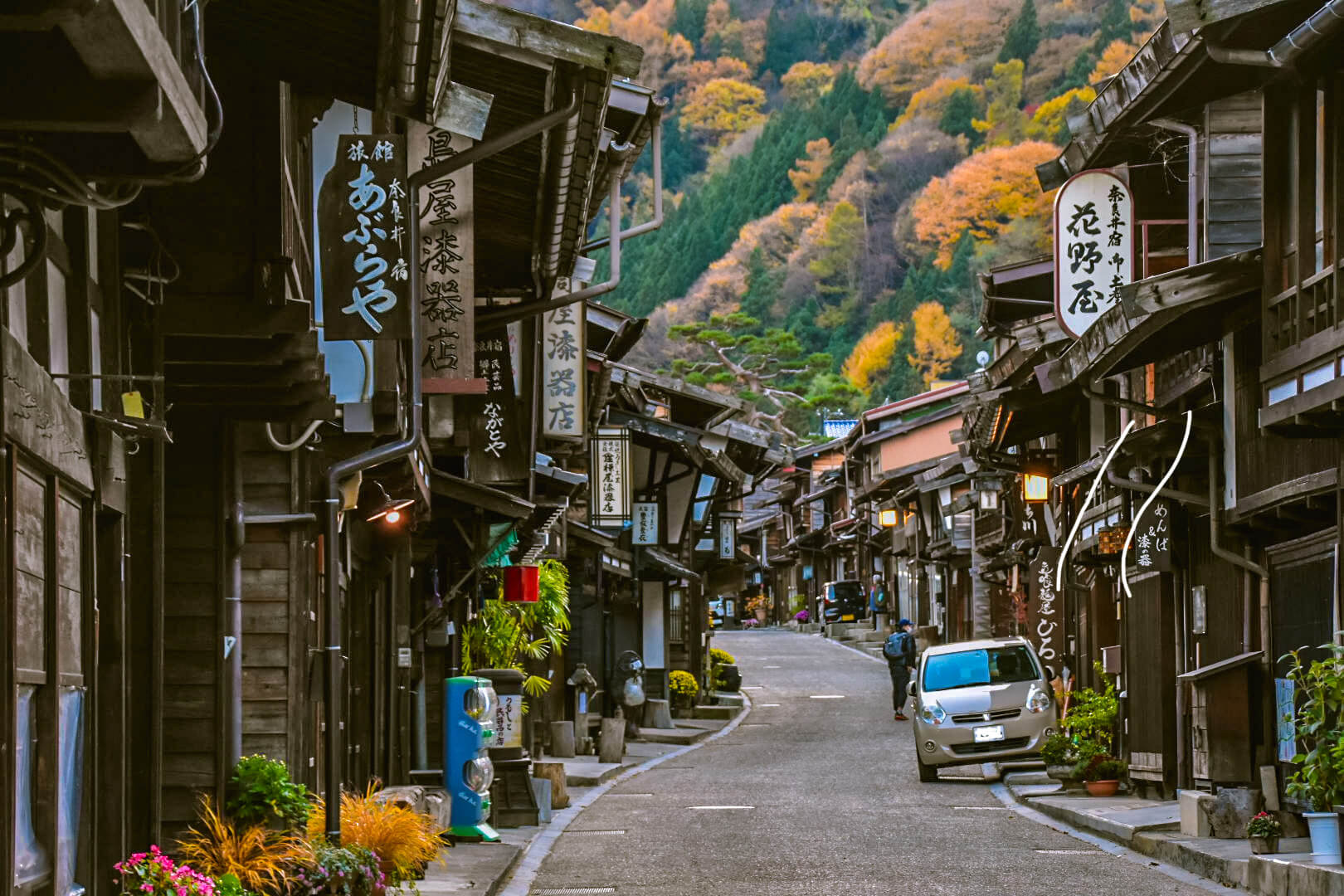
Narai: Located deep in the Kiso Valley, Narai is less visited than Magome or Tsumago and our recommendation of post towns in the Kiso Valley. Located at the midpoint between Kyoto and Edo, Narai was the wealthiest of the 69 towns that marked-out the Nakasendo. Today, much of the town remains and visitors relish the extent of the preservation. Historic buildings stretch on much further than any of the other extant postal towns which now serve as guesthouses, restaurants, and craft and antique shops. Once known as ‘Narai of a Thousand Houses’, visitors to the town will get a strong sense of its past significance with the area preservation extending 1 kilometer in length and 200 meters in width. The Nakamura Residence and Kamidonya Shiryokan are beautifully preserved residences, welcoming visitors to enter and further their understanding of life during the Edo Period.
Located just outside the town’s historic centre, Narai Station makes the town immediately accessible with some visitors choosing to walk either to or from Yabuhara. Though this walk is notably shorter than the trail from Magome to Tsumago, it is much steeper and more demanding and should only be attempted by those with a good level of fitness and mobility. In summer, the heat and humidity can make this walk challenging so make sure you are suitably prepared and take your time.
Recommended
1-Day Tour from Nagano and Matsumoto: Experience Matsumoto Castle and Narai-juku
- Spots:
- NaganoMatsumotoKiso Valley
- Pick-up:
- Nagano CityMatsumoto
- Drop-off:
- Nagano CityMatsumoto
Recommended Routes for Walking the Nakasendo
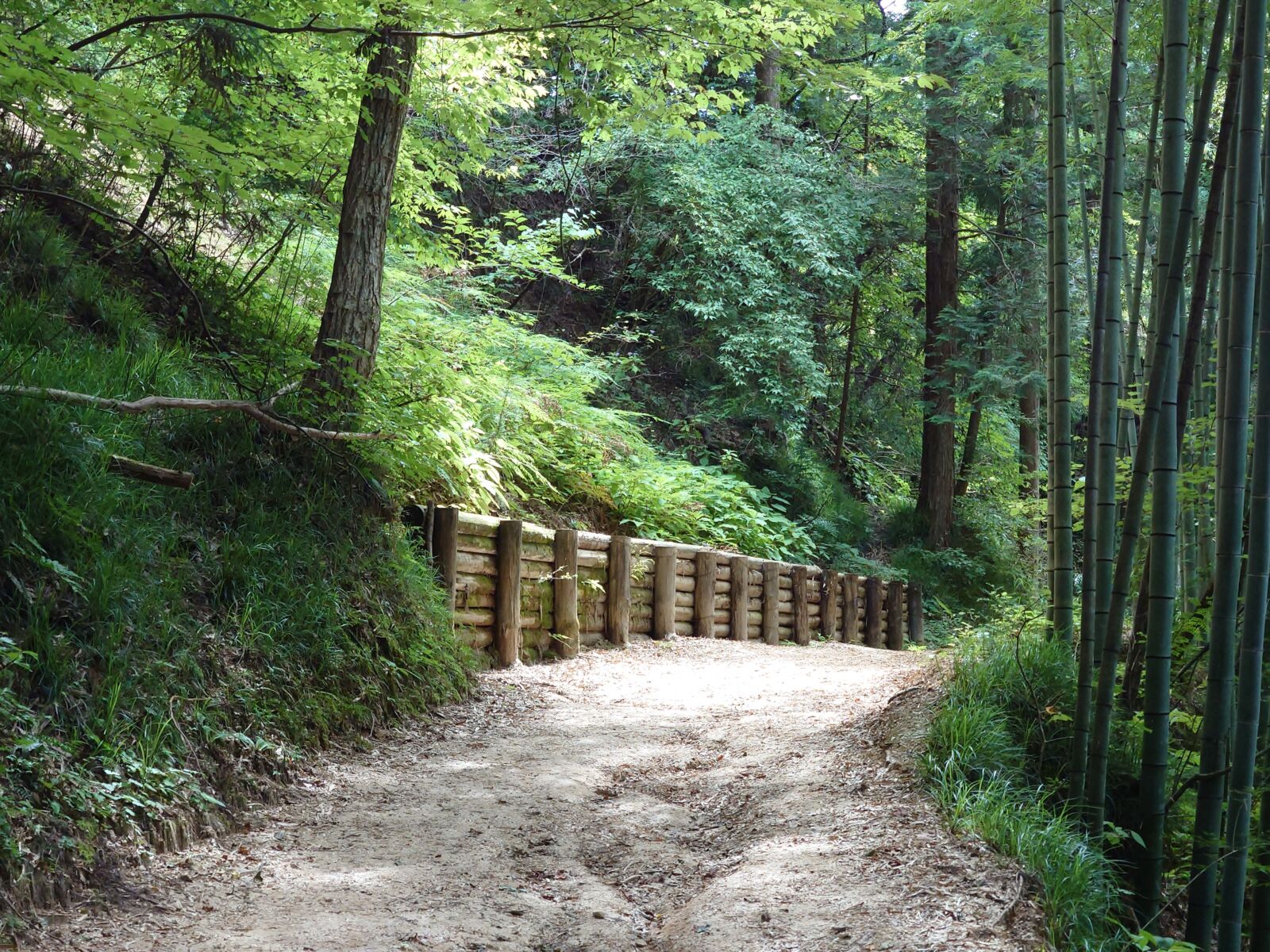
The best way to see the Nakasendo is to walk it - or a portion of it at least. At over 500 km, walking the whole route may not be feasible (although some dedicated enthusiasts take the challenge), but picking a smaller section and walking between two of the post towns is a great way to enjoy nature and culture together. While the route is open year round, in winter it is often under deep snow and the freezing conditions require extra caution and preparation. However, for the rest of the year it stands as a trail offering great scenery that anyone of a normal level of fitness can handle. See below for some of the best routes:
Magome–Tsumago Trail
This is the most popular section of the ancient Nakasendo trail and it’s easy to see why—the path takes you through two of the most well-preserved historic post towns and lets you stroll through stretches of the Japanese countryside and a peaceful forest along the way.
Best season: April through November.
Distance: about 7.5 kilometers (4.7miles). Rest areas and toilets are located in a couple of places along the way.
Time required: the entire hike takes around 2.5 to 3 hours (not including time spent exploring the post towns).
Recommended starting point: we recommend going from Magome to Tsumago, as most of the trail is a gentle downhill with a few uphills here and there. Going the other way will require going uphill most of the way.
How to get to the trailhead:
See our article on Access to the Kiso Valley for detailed information on how to get to Magome, which involves taking a bus from the nearest station to Magome. Once you get off the bus, simply take the cobblestone road uphill through the center of the town. This road leads you straight to the rest of the Nakasendo trail that will take you to Tsumago (the trail is well marked with signs, as well).
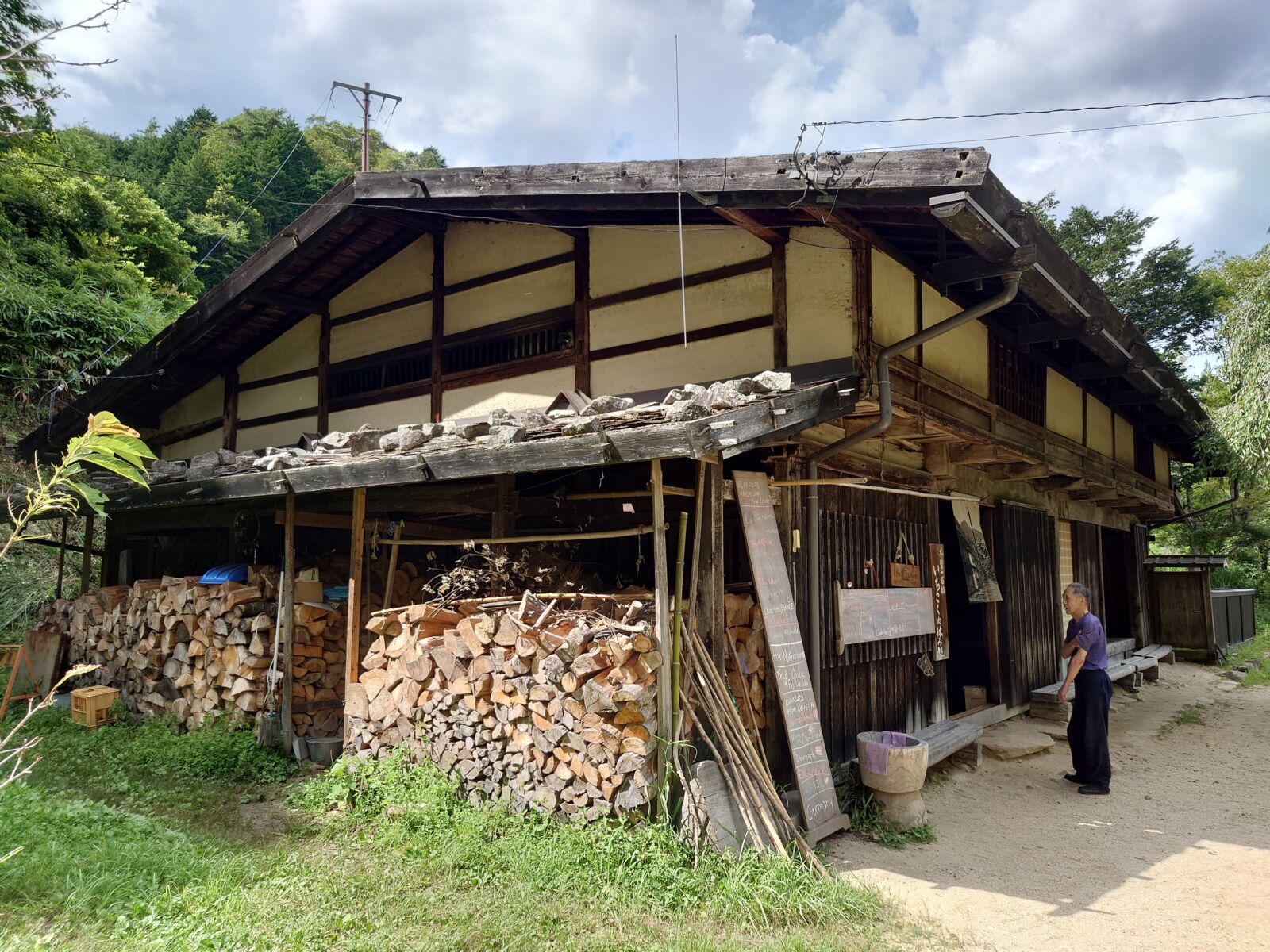
Things to look for on the trail
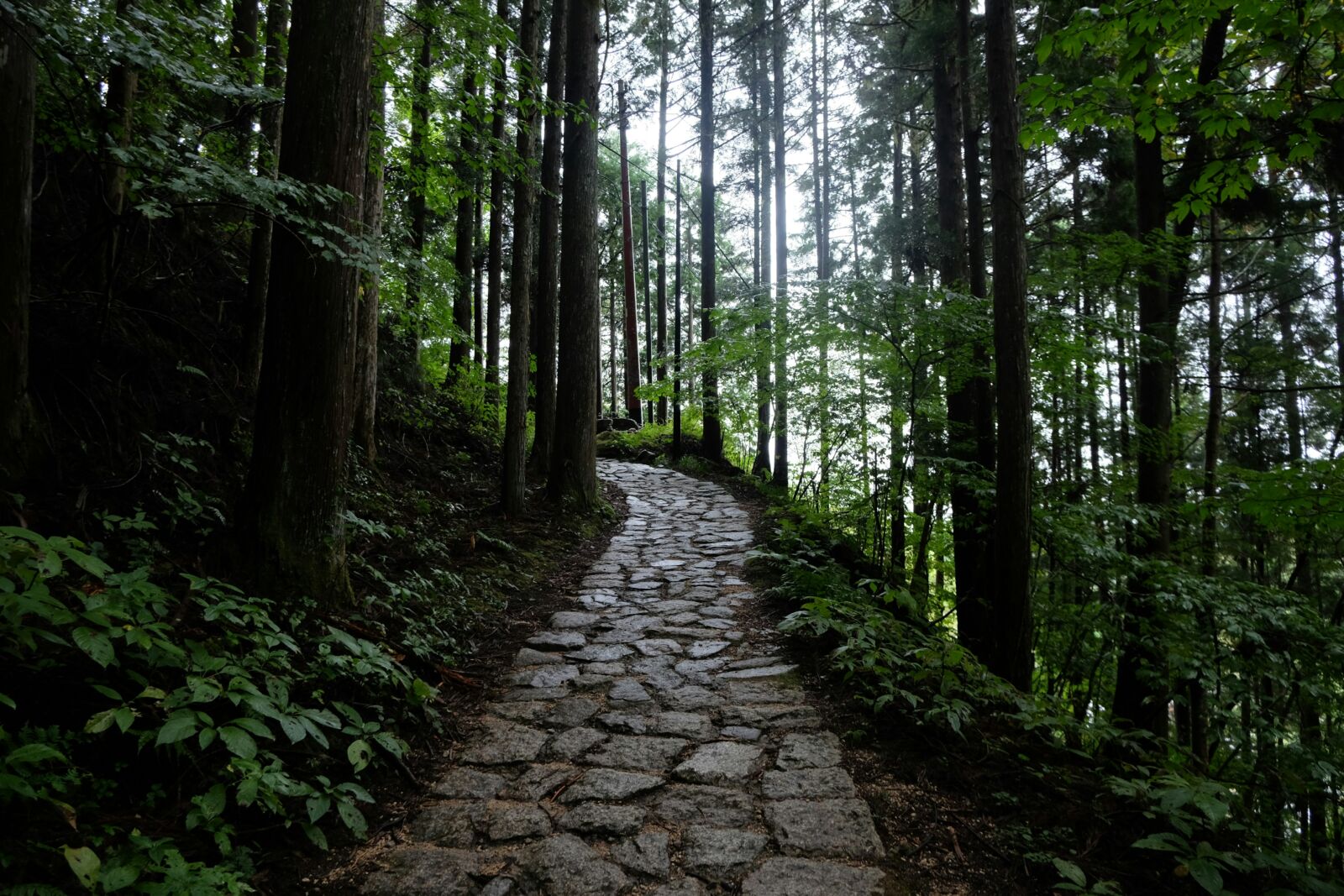
The historic post towns of Magome and Tsumago on either end of the trail are well worth spending time to explore. Magome has a beautiful old watermill that still functions to this day and few museums where you can learn about the town’s history and see the inside of some of the old buildings. In Tsumago, you can see old inns and residences that are 100 to 300 years old, some of which have been turned into museums. One building was once a horse stall. The Wakihonjin Okuya, which was used to house government officials, is an especially impressive example of a traditional dwelling complete with an indoor fire pit. At one end of the town, you will find a large wooden notice board that informed travelers of the local laws and tariffs as well as a small watermill.
Both towns have their share of cafes, small eateries, and souvenir and craft shops. Be sure to stop in at the tourist information centers in each town to get pamphlets and detailed information on sightseeing spots.
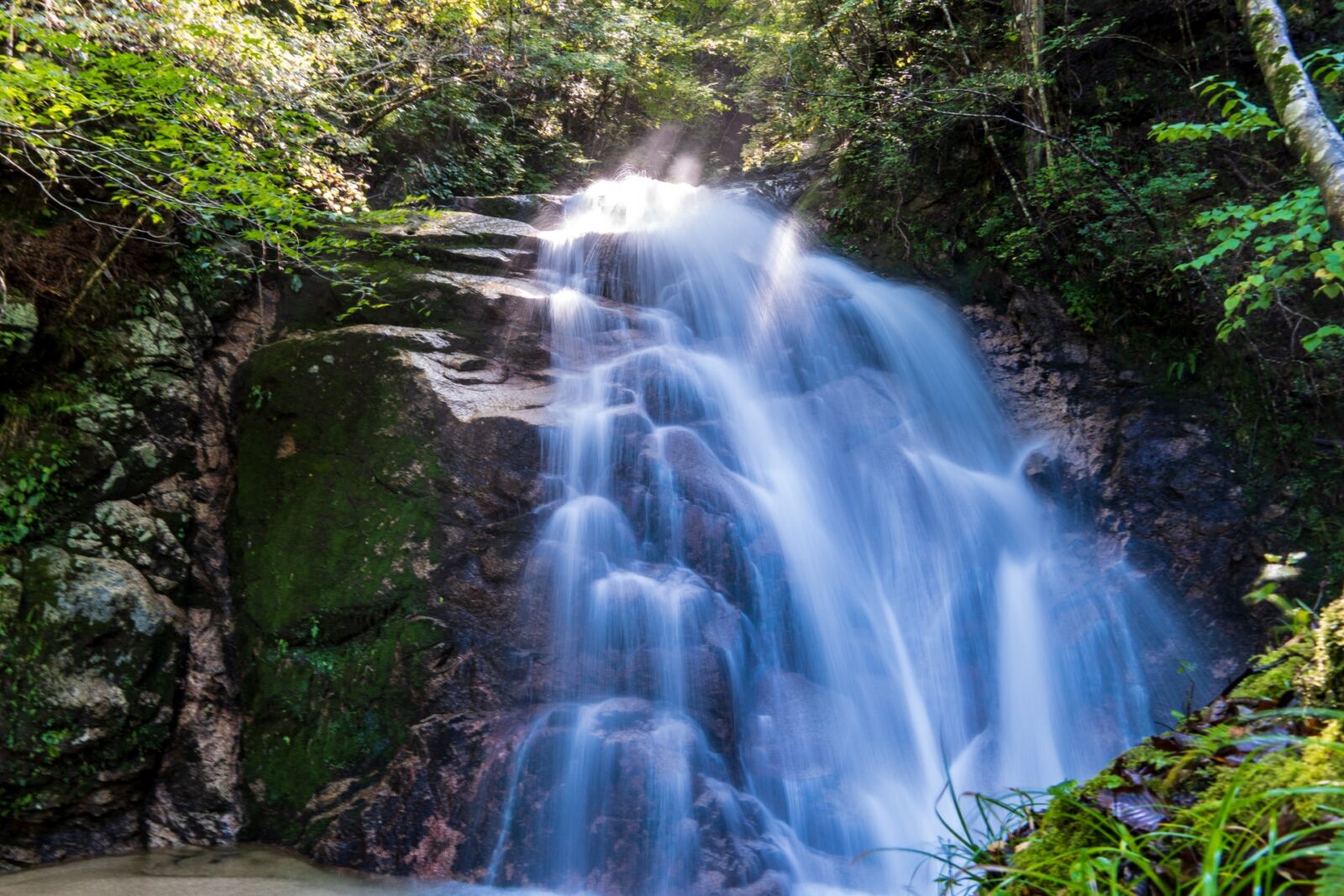
Along the trail between Magome and Tsumago, you will be walking through a pleasant forest along a gentle stream for much of the way. Keep an eye out for the Otaki and Metaki Waterfalls around the halfway point and the small stone Buddha statues (jizo) scattered about the trail. You may see some wild monkeys and other wildlife too!
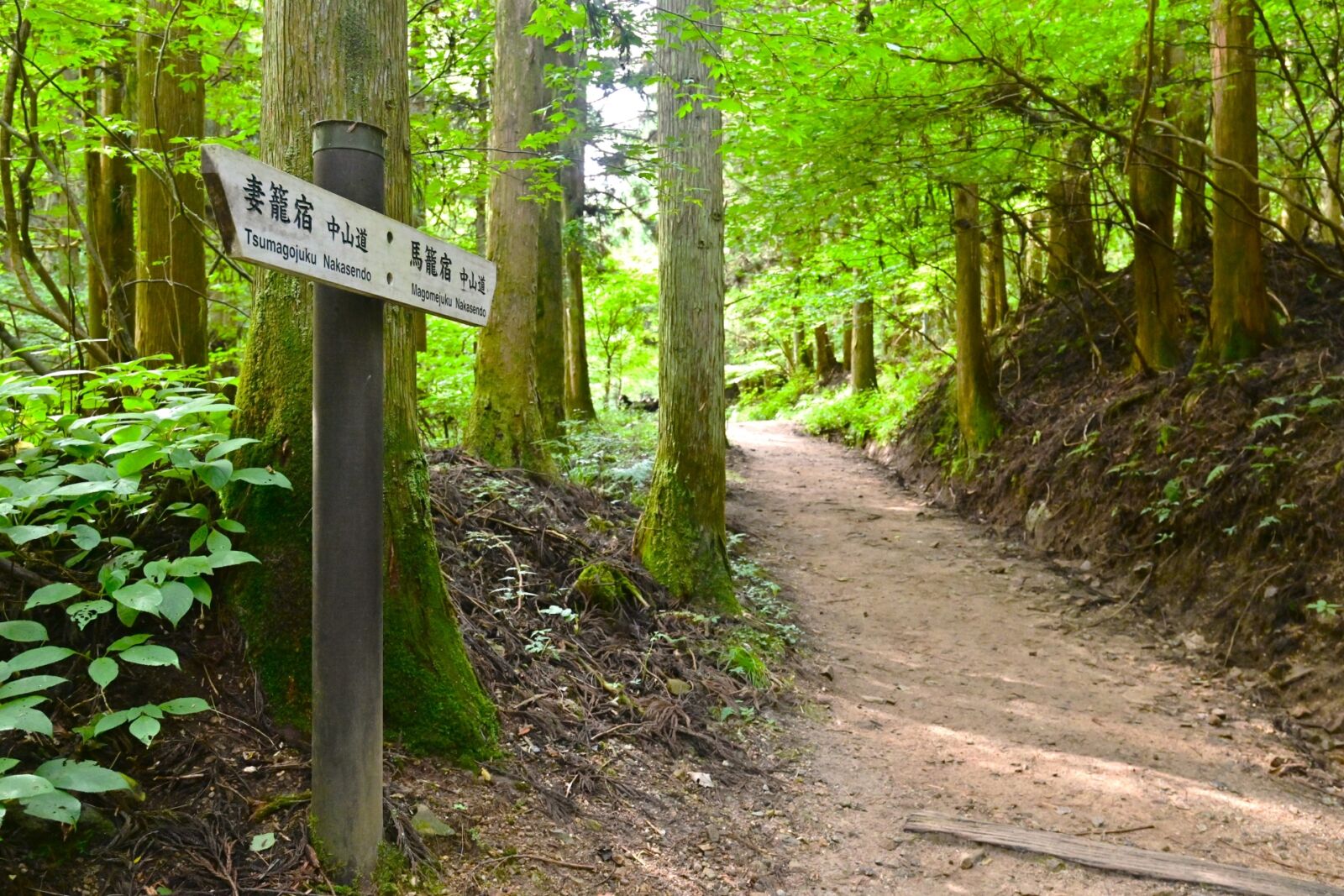
Getting closer to Tsumago, you will run into the Tateba Chaya (tea house), which is thought to have been built before the 1600s and served as a resting place for travelers. Here, you can take a break and enjoy a cup of green tea offered by the maintainer. If you walk the trail around May, the weeping cherry blossom in front of the tea house will be blooming with beautiful pink flowers.
If you have some energy left after reaching Tsumago, you may want to check out the Tsumago Castle Ruins located just outside of the town. Though there are hardly any visible ruins remaining, the location offers a great top-down view of the area.
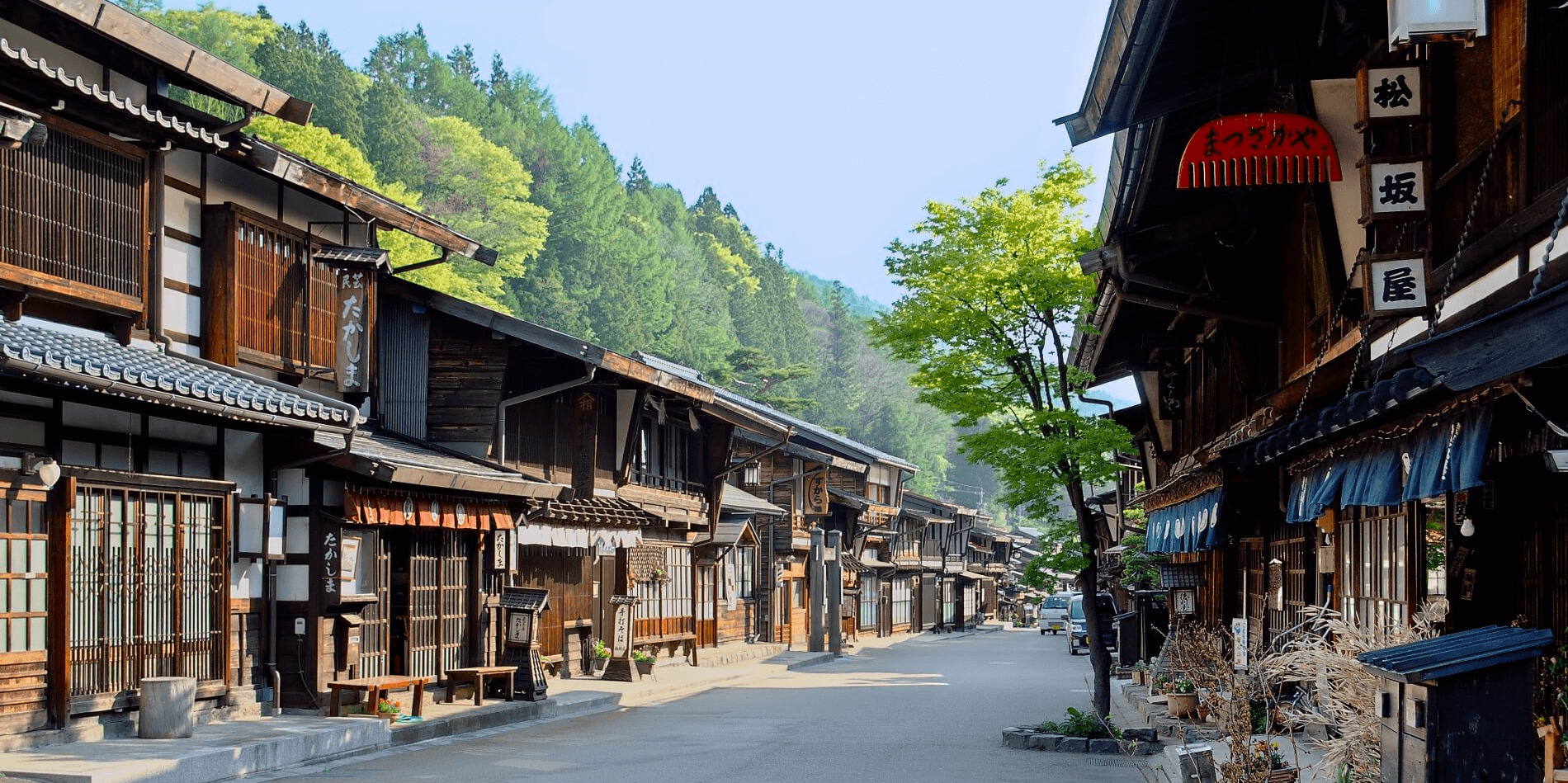
Yabuhara–Narai Trail
This section of the Nakasendo Trail takes you over the Torii Pass, which was once considered the most difficult section of the trail by travelers long ago. Though you do need to make the ascent to the top of the pass, the uphill portion is not overly rigorous and the trail makes for a relaxing hike overall.
Best season: April through November.
Distance: around 6 kilometers.
Time required: about 3 hours.
Recommended starting point: we recommend starting from Yabuhara and finishing at Narai, as Narai’s picturesque historic townscape will be waiting for you at the end—the perfect way to finish a long hike!
How to get to the trailhead:
Take the train to Yabuhara Station. In the parking lot near the station, look for the big sign that tells you about the Nakasendo Trail where you can also check the details about the Yabuhara–Narai stretch. Follow the signs uphill through the town that point you in the direction of the “Torii Pass.” Once you get to the trailhead, it’s a straight shot to Narai.
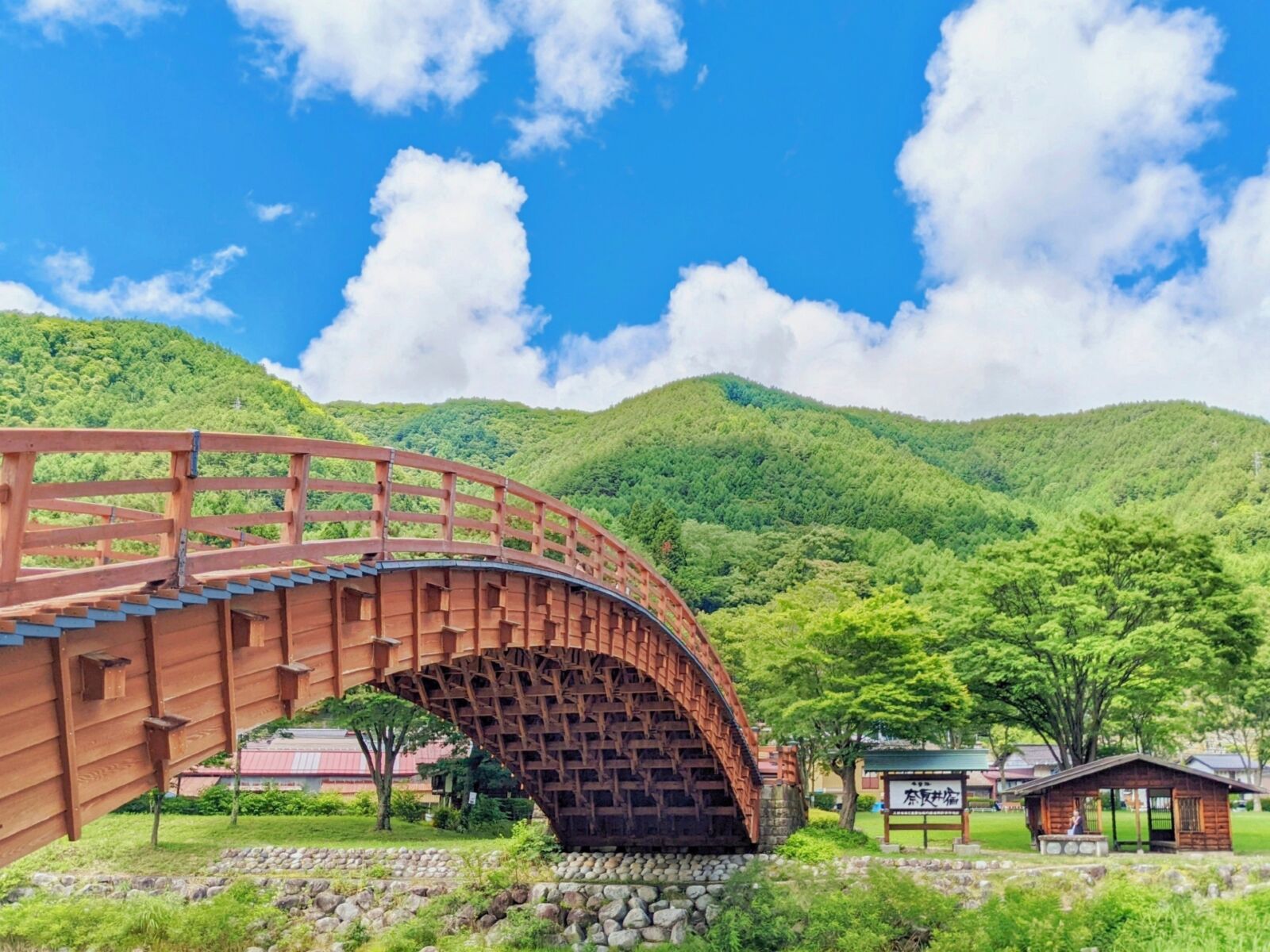
Tips for Hiking the Samurai Road
Most of the trail is within the forest, so keep an eye out for wildlife like monkeys and Japanese serows. There are also many impressive trees that are several centuries old.
There is a Shinto shrine (Ontake Shrine) and large stone torii gate near the top of the Torii Pass. You will also have a great view of the Kiso Valley and the town of Narai below. Around the shrine, there are several old statues that date back many centuries and commemorate Buddhist monks, warriors, and other historical figures. There is a rest area with toilets and running spring water, as well. From there, it’s downhill until you reach Narai!
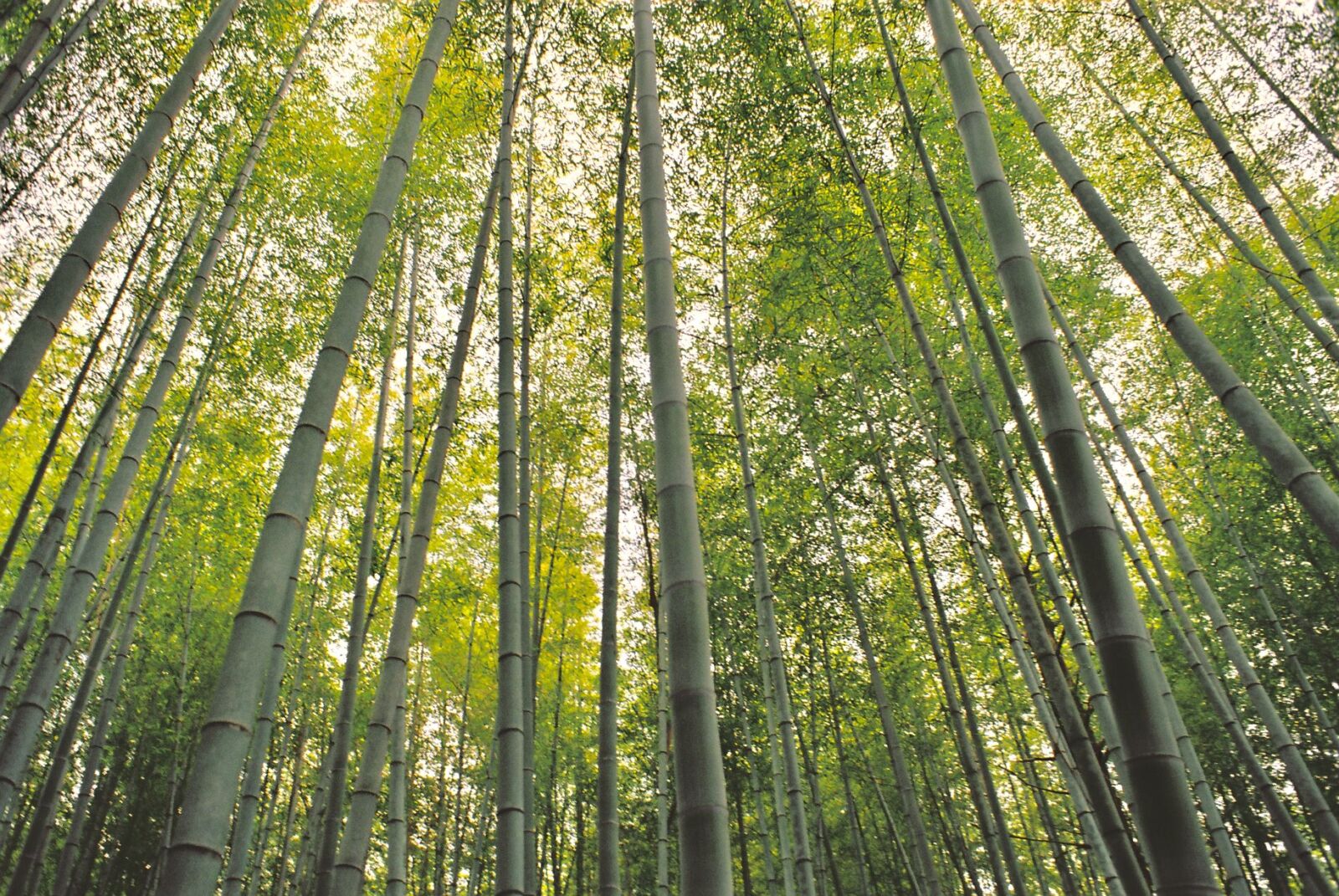
Once you reach Narai, there is plenty to explore. The old post town is a one-kilometer stretch lined with historic inns dating back hundreds of years. The buildings are meticulously preserved and reflect the townscape as it was during the prospering Edo period. Nowadays, the buildings home to craft and souvenir shops, cafes, restaurants, and more.
Also, pay a visit to the shrines and temples scattered about the town. On the northern end, you will find a group of 200 unique jizo (small stone Buddhist statues). If you are a history lover, you will want to visit the Nakamura Residence, which is the preserved house of a wealthy comb seller from the Edo period, and the Narakawa Museum of History and Folklore, which exhibits artifacts and crafts from the area.
There is a beautiful wooden bridge that arches over the Narai River near the post town. Constructed from a 300-year old hinoki cypress tree, it is a beautiful work of Japanese craftsmanship.
The Greater Kiso Valley Area
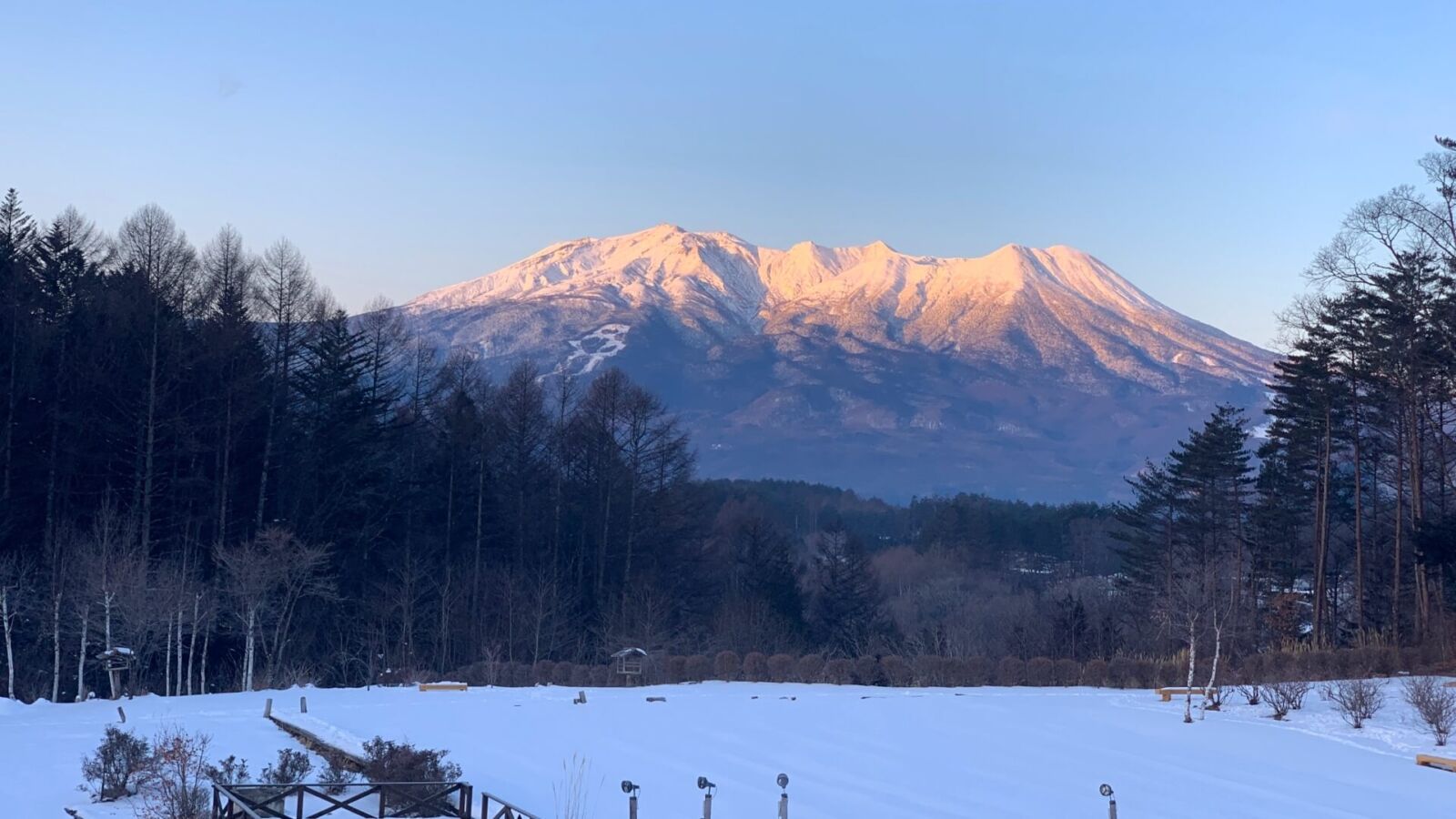
Visitors to the post towns of Magome, Tsumago and Narai, including those who choose to walk the trail between them, will be passing through the beautiful Kiso Valley. Long regarded as one of the most beautiful pockets of Nagano, the Kiso Valley is a place of dense forests, undulating mountains and shimmering rivers – a place of myth and legend.
Lying in the center of Japan’s mountainous heartland, the Kiso Ontake Mountain Range dominates and defines the region. The heavily forested mountains and abundant flow of the rivers that have carved-out the dramatic gorges and waterfalls nestled within them, are domains of special beauty.
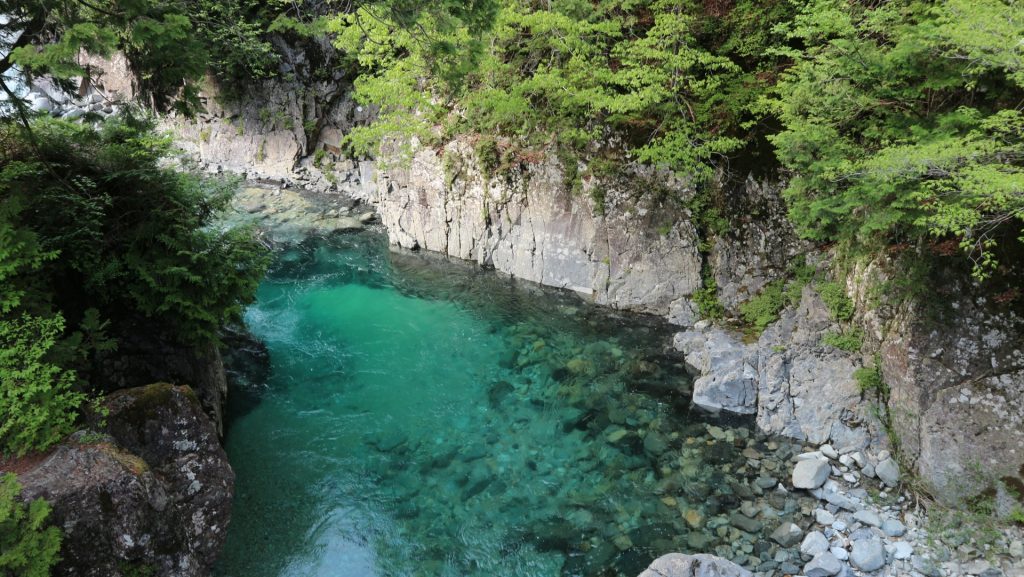
As Japan’s second tallest volcano (behind Mt Fuji), Mt Ontake is the imposing and sacred heart of the mountain range. Rising to 3067 meters above the valley below, Ontake is a popular destination for mountaineers, hikers, and nature enthusiasts. The Ontake Ropeway is open from late-April until early-May and again from late-June to early-November, transporting visitors to the mountains seventh station, 2333 meters above sea level.
Though the region has not been immune to development, the rugged nature of the landscape has prevented Kiso being overly-urbanized. Kiso is a place of rare beauty, where lush forests have traditionally supported a thriving timber industry and craftsmanship and in doing so, engrained local people with a deep respect for nature.
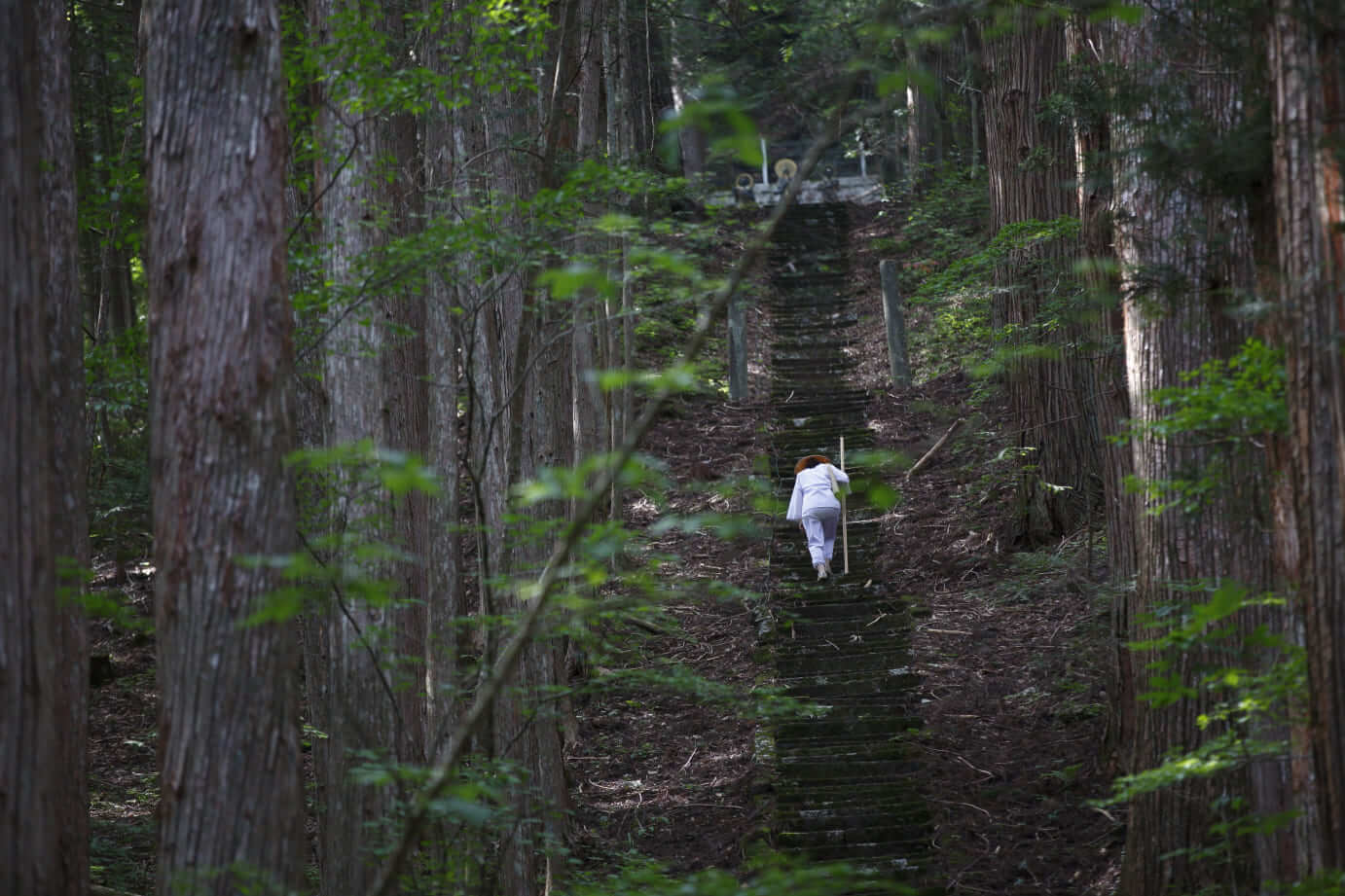
It is a place of tradition, where the crafts and industry of old, and the townships that grew from them, continue to thrive and now welcome the world to visit. Start with these 25 things to do around the Nakasendo & Kiso Valley. We encourage you to walk the trail, go slow, and follow the ancient road to this quiet enclave and discover the Japan of your imagination.
Want to join a trek on the Nakasendo Trail?
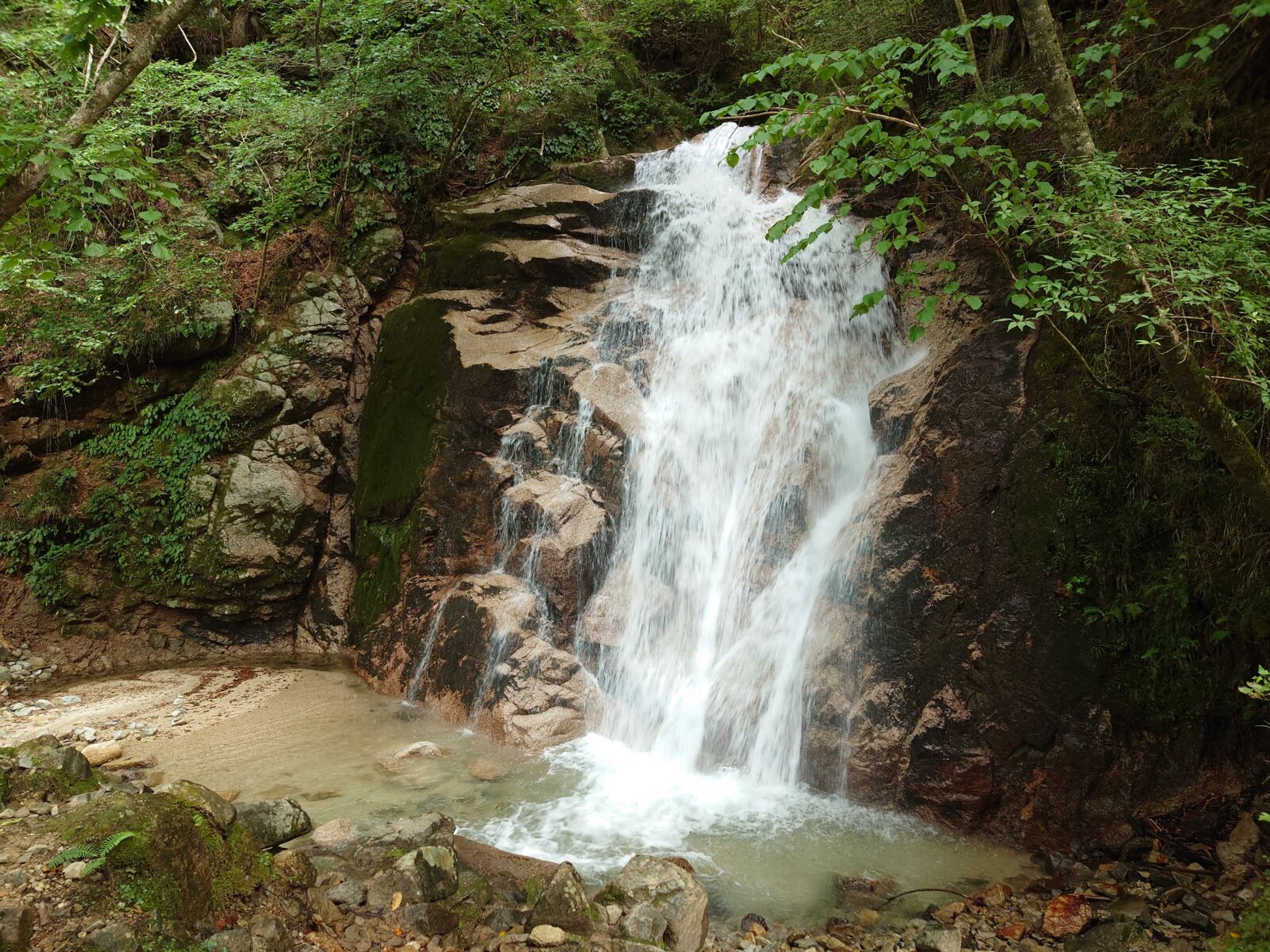
Based in Central Japan and operating much of the year, we offer multiple highly entertaining group-tours of the Nakasendo that are sure to please. All tours are led by locally-based guides and include a visit to the towns of Magome and Tsumago as well as an 8km hike on the Nakasendo itself through beautiful forest. Our tours are fun, interactive and family-friendly. For more information, or to book a tour, click on either of the banners below. Pick up options are available from Nagano, Matsumoto, and Nagoya, making it easy for you to join wherever you are.
Recommended
1-Day Tour from Nagano and Matsumoto: Step into the Past on the Nakasendo
- Spots:
- NaganoMatsumotoKiso Valley
- Pick-up:
- Nagano CityMatsumoto
- Drop-off:
- Nagano CityMatsumoto
Popular
1-Day Tour from Nagoya: Hiking the Historic Nakasendo Trail
- Spots:
- NagoyaKiso Valley
- Pick-up:
- Nagoya
- Drop-off:
- Nagoya
Of course, we also offer private tours and transport in and around the Nakasendo trail and Kiso Valley area, as well as other regional destinations. Our drivers and vehicles are fully certified, allowing us to transport you to and from your preferred destinations in combination with any activity that suits your schedule. All vehicles are well-maintained and in good condition, allowing you to relax and enjoy your ride to wherever you are going.
We can arrange both private tours with an English-speaking guide or a private charter, including a private vehicle and driver but without a guide. We’d love to be part of your adventure in Central Japan and help you discover even more!
Got a question about visiting the Nakasendo Trail? Click the ‘INQUIRY’ button below and let’s get planning together!














